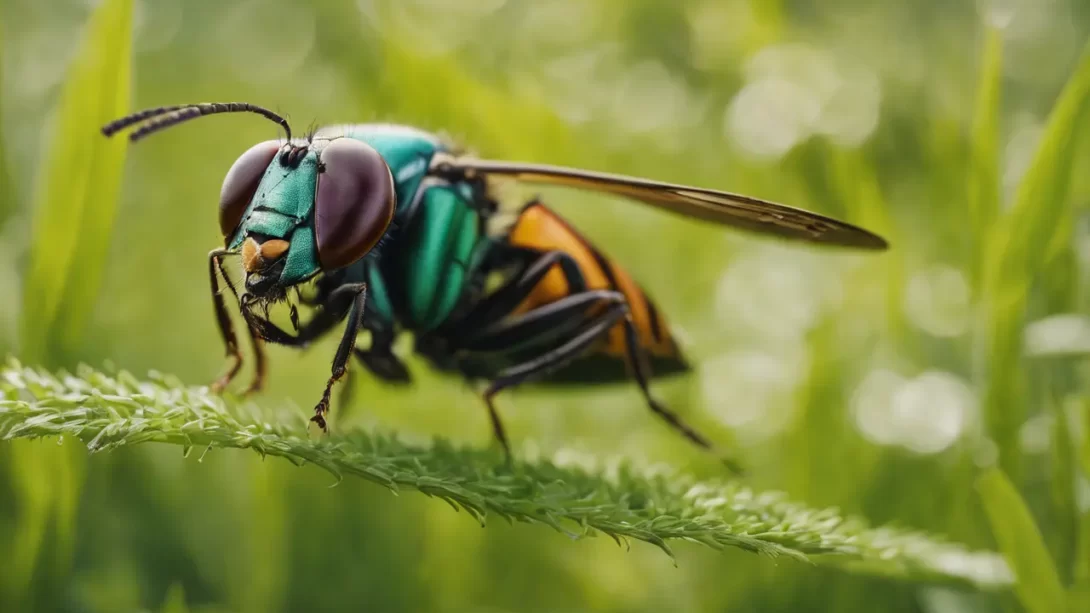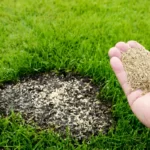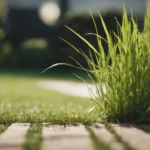Insects play a vital role in various ecosystems, including grasslands, gardens, and agricultural fields. Among their many ecological functions, some insects are known for feeding on grass, which can have both beneficial and detrimental impacts on their environment. This article will explore the diverse world of grass-eating insects, highlighting their habits, types, and roles within their ecosystems.
Grass as a Habitat and Food Source
Grass serves as a fundamental component in many ecosystems, offering both habitat and sustenance to a wide array of insects. It’s not just a plant but a complex ecosystem that supports life in various forms. From the towering blades of prairie grasses to the manicured lawns of urban parks, grasses provide a vital base for food chains and a home for numerous insect species. Understanding this dynamic is key to appreciating the roles that different insects play in grassy environments.
Common Grass-Eating Insects
There are several types of insects commonly found feeding on grass. These include:
- Grasshoppers and Crickets: Known for their voracious appetite for grass, these insects are among the most conspicuous grass-eaters.
- Armyworms and Cutworms: Often found in agricultural areas, these caterpillars can cause significant damage to grass and crops.
- Caterpillars of Various Moths and Butterflies: Some species of moths and butterflies lay their eggs in grass, where the emerging caterpillars feed.
Each of these groups of insects interacts with grass in unique ways, influencing both the health of the grass and the surrounding ecosystem.
Grasshoppers and Crickets
Grasshoppers and crickets are perhaps the most well-known grass-eaters. They belong to the order Orthoptera and are found in a variety of grassy habitats across the world. Their diet primarily consists of grass blades, which they consume in large quantities. The life cycle of these insects, from nymph to adult, revolves around grassy areas where they feed, mate, and lay eggs. While they play a role in the natural process of plant decomposition and soil enrichment, in large numbers, they can also become pests, causing significant damage to pastures and crops.
Armyworms and Cutworms
Armyworms and cutworms, the larvae of certain moth species, are notable for their impact on grass and crops. These caterpillars are named for their behavior of moving across fields in large numbers, resembling an army. They primarily feed at night, making them a challenging pest to manage.
- Armyworms: They are known for their ability to devour entire fields of grass or crops, leaving behind bare soil. They are particularly problematic in agricultural settings where they can cause significant economic damage.
- Cutworms: These caterpillars are notorious for cutting down young plants at the soil line, effectively “mowing” grass and seedlings. They are a common problem in gardens and on farms, often requiring targeted control measures.
In both cases, the feeding activity of these worms can lead to noticeable damage to grasslands and agricultural crops, necessitating careful management to protect these environments.
Caterpillars of Moths and Butterflies
The caterpillar stage of various moths and butterflies is another group that feeds on grass. While some caterpillars prefer specific types of plants or leaves, others are more generalist and include grass in their diet. For example:
- Moth Caterpillars: Many species of moths lay their eggs in grassy areas, and the emerging caterpillars feed on the grass blades. These caterpillars can range from being minor consumers to significant pests, depending on their numbers and species.
- Butterfly Caterpillars: Some butterflies, such as the common Woodland Skipper, have caterpillars that feed on grass. These are typically not as damaging as moth caterpillars but still play a role in the grassland ecosystem.
The role of these caterpillars is dual; they contribute to the natural cycle of decomposition and regeneration in grasslands, but they can also impact the health and appearance of lawns and commercial grass fields.
Other Grass-Feeding Insects
Beyond these common examples, other insects such as certain types of beetles also feed on grass. While they are generally less noticeable than grasshoppers or caterpillars, they can still impact grass health and are an important part of the ecosystem. These insects may feed on grass roots, blades, or even the seeds, contributing to the diversity of life that grasses support.
The Ecological Impact of Grass-Eating Insects
Grass-eating insects play a significant role in their ecosystems. In natural grasslands, they are part of a delicate balance, contributing to the cycling of nutrients and the control of grass growth. Their feeding activities can stimulate new growth in grasses, promote biodiversity by preventing any single species from dominating, and provide food sources for predators. However, in agricultural and landscaped areas, high populations of these insects can become problematic, leading to overgrazing and damage to crops and lawns.
Management and Control
In agricultural and garden settings, managing the populations of grass-eating insects is crucial to protect crops and maintain healthy lawns. This can be achieved through:
- Integrated Pest Management (IPM): Combining biological, cultural, physical, and chemical methods to control insect populations in an environmentally sensitive manner.
- Natural Predators: Encouraging birds, bats, and beneficial insects that feed on these pests can be an effective and natural control method.
- Chemical Controls: While pesticides can be effective, they should be used as a last resort due to potential environmental and health risks.
- Regular Monitoring: Keeping an eye on insect populations and grass health can help in early detection and prevention of infestations.
Conclusion
Grass-eating insects, from grasshoppers to caterpillars, are integral parts of their ecosystems, playing roles that range from supporting the food chain to influencing the health of grasslands. While they can pose challenges in managed landscapes and agricultural settings, understanding their ecological role is essential. Effective management and appreciation of these insects’ roles in nature can help maintain the balance between healthy grassland ecosystems and human needs. As with many aspects of nature, a balanced approach is key to coexisting with these diverse and important creatures.



